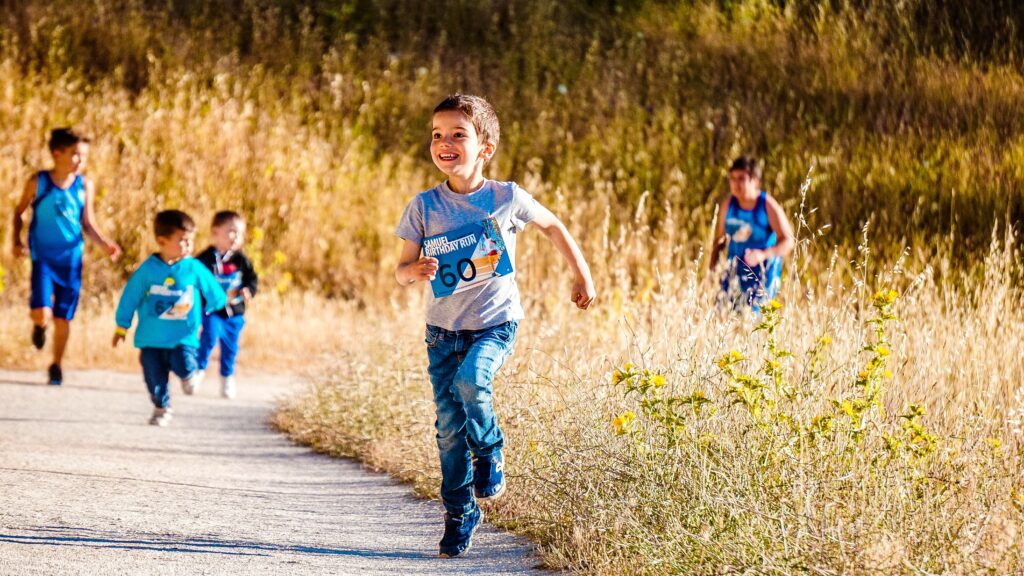Self-care for kids can mean many things, from learning methods for calming down to practicing an enjoyable hobby. Like adults, children experience stress, anxiety, and mood disorders that can cause a decline in their confidence and ability to find joy. That’s why it’s so important to look for ways to help your child feel good each day, as many self-care tactics are preventative. Whether your little one needs to find calming activities or ways to get moving for their physical health, there are several things you can do to help them make some positive changes, including modeling healthy behaviors yourself. Here are a few ways to guide your child down a better path for their physical and mental wellbeing:
Find support for their mental health
Some children can experience stress and anxiety from a very young age, and it’s important for parents to find professional guidance to help them learn coping mechanisms and how to prevent those feelings from occurring. These days there are many counseling options available, and a number of therapists are online in order to provide services to those who are on a tight budget or schedule. These virtual appointments are a great option because they provide a wider pool of therapists to choose from and allow for the same amount of privacy that in-person appointments do. Not only that, you won’t feel pressured to commit to a particular counselor since many will offer a complimentary first session.
Encourage self-regulation
Even children who don’t experience stress or anxiety may have a hard time regulating their emotions when facing disappointment or anger. You can help your child self-correct by modeling the type of behavior you’d like to see, including taking deep breaths before reacting, speaking calmly, and using certain moments to teach the proper behavior. For instance, if your child sees you get upset when you spill a glass of water at the dinner table, they’ll likely do the same when they make a mistake. Use those moments to show your child solutions rather than getting emotions involved.
Practice soothing activities
Another great way to show your child how to care for their mind and body is to practice soothing activities together, such as engaging in meditation/yoga, making art, or simply having quiet time after being active. While many kids are full of energy and would happily keep going from one activity to the next for hours, they need to wind down and recharge mindfully. Once your child is too old for naps, make it a point to engage in quiet time during the day or spend half an hour reading before bed to help them relax and get good rest.
Talk about boundaries
Sometimes, self-care goes hand-in-hand with confidence. Teaching your child how to recognize the need for rest and soothing activities is also connected to learning boundaries and autonomy. When kids understand that some limits are beneficial, they’re able to create boundaries in other aspects of their lives, such as learning to say “no”, or to stand up for themselves. This is helpful both in school and in general and can assist young people with building self-esteem and resisting peer pressure or bullying. Learning about boundaries is also tied to empathy since it requires the ability to imagine how someone else might be feeling in order to prevent crossing their personal boundaries.

Incorporate physical activity
While boosting emotional and mental health is crucial for kids, it’s also important for them to focus on their physical wellness. In an age of advanced video games and smartphones, it’s especially imperative for young people to learn how to fit activity into their day and, just as importantly, why it’s essential. Give your child some insight into the benefits of physical activity; instead of simply telling them that exercise is good for them, talk about the different ways movement can help us feel better, including good joint and bone health, effective disease prevention, better blood circulation, and enhanced strength. If your child doesn’t enjoy certain activities–such as walking or playing a sport–look for ways they can get moving and have fun at the same time. Swimming, dancing, and jumping on a trampoline are great examples.
Help them sleep better
One activity that’s tied to overall wellness is sleep, and many kids aren’t getting enough of it. Even those who are getting the right amount may not be getting a good quality of rest. Help your child make good sleep a priority by introducing relaxing bedtime routines, such as brushing their hair, listening to soft music, or taking a warm bath. Have them put away devices at least an hour before bedtime, and take a look at their environment; is the room clean and decluttered? Is the lighting soft? How warm or cool is the room? Having the right temperature, bedding, and surroundings can make a big difference in the amount and quality of rest your child gets each night.

Get outdoors
When it comes to getting better sleep, another helpful tactic is to get outdoors several times per week. Playing outside, swimming, going for a walk in the park, or having a picnic are just a few things your child can do that will be beneficial to his or her mental and physical health. Getting outdoors can boost our mood, help reset our inner clock for better rest, and promote physical activity, all of which can have a positive effect on our minds and bodies. If your child isn’t a huge fan of spending time outside, look for fun outdoor toys and activities that will keep them engaged. Water-based activities are great for the hot days of summer while drawing with sidewalk chalk, building a fairy garden, and taking part in a scavenger hunt are perfect for creative kids.
Encourage journaling
Another great self-care activity for creative kids is journaling. Writing or drawing out thoughts and feelings can be extremely advantageous for kids of just about any age. This can be a shared project or a private one, depending on your child’s needs, so let them know beforehand what the guidelines are. Provide them with a notebook and pens, pencils, colored pencils, markers, stickers, and anything else they may need to create with. Encourage them to write down what happened at school that day, or how they feel about a specific world event.
If your child is too young to write on their own, start a nature journal that both of you can work on; go for walks together and look for found items that you can tape into the book and look at later. Not only is journaling a great way for kids to process their emotions, it can help them work on school subjects that are giving them trouble, write out the pros and cons of a situation in order to make a decision, and learn better communication skills.
Helping your child learn self-care methods can take some time as they try different tactics and figure out which ones are best for their needs, so patience is key. Keep in mind that the more you can share and model these actions with your child, the better they’ll learn.
Photo via Pexels

Start the discussion at forum.prostasia.org